In addition to being National Historic Preservation Month, May is also Asian Pacific American Heritage Month and the perfect time to share this story by PA SHPO’s 2019 Keystone Intern, Yen Ho. Yen is a Vietnamese American from southeast Pennsylvania who, in addition to her summer project, helped the PA SHPO learn more about the places important to the Vietnamese-American community and that reflect this underrepresented part of our history.
My Parent’s Story
Learning about my parents’ stories of how they came to America fascinates me.
My dad was born in Hue, the former capital of Vietnam, and my mom was born in the Ben Tre province of Vietnam. My parents came to America few years after the Fall of Saigon in 1975.
My dad was one of the “boat people,” and arrived in America in 1980. The ‘Vietnamese Boat People‘ are a group of almost two million men and women who escaped from Vietnam between 1975 and 1992.
Before he arrived in the United States, he and many others in that small boat were saved by a ship nearby and took them to a refugee camp in Japan. That was when my dad had the opportunity to apply to places where he wanted to live, including the United States. In America, he studied and worked in fulfill his American Dream.
It was around that time when he met my mom. My mom arrived 5 years after my dad in 1985. Her older siblings worked for the United States as a social worker and for the Navy. They sponsored my mom and her younger siblings to come to America, but before they arrived, they were sent to a refugee camp in the Philippines. They spent about 6 months there before officially arriving in America.
Philadelphia’s Little Saigon
Most of the Vietnamese population in Pennsylvania lives in Philadelphia, and they named their community “Little Saigon,” similar to the other “Little Saigon” neighborhoods in Westminster, CA and Falls Church, Washington D.C.
The location of “Little Saigon” is along Washington Avenue in South Philadelphia in an area of shopping centers. The history of how the shopping centers formed was surprisingly later than 1975.
The first plaza that started it all was the Hoa Binh Plaza on 16th and Washington, just outside the Little Saigon neighborhood. It was formed in 1990, and became the first Asian market outside of Chinatown.
The Wing Phat Plaza was later built during the 90s, and the New World Plaza and the 1st Oriental Market outshined both plazas when they were built in 1998.
One particular Buddhist temple I don’t know a lot about is called the “Chua Bo De Buddhist Temple” on 13th and Washington, located within Little Saigon.
“The Journey”
I only knew about the mural that was painted on the north side of the temple’s wall. The mural was called “The Journey: From Vietnam to the United States” by Shira Walinsky.
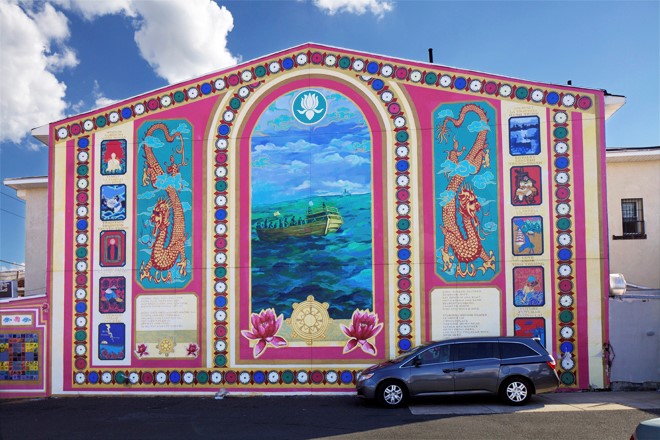
It depicts “boat people” in the middle of the ocean, waving the Republic of Vietnam flag, and another boat in the background (possibly a ship that would save them).
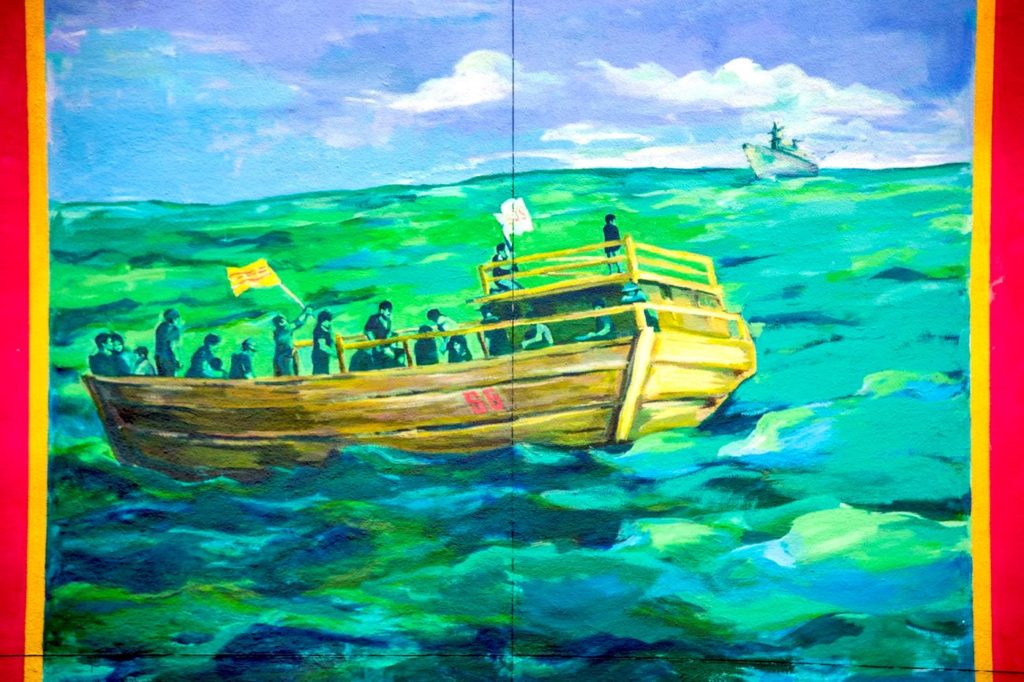
It definitely shows how much sacrifice those Vietnamese people at the time had done to save themselves and each other. It definitely reminded me of my dad’s journey to America.
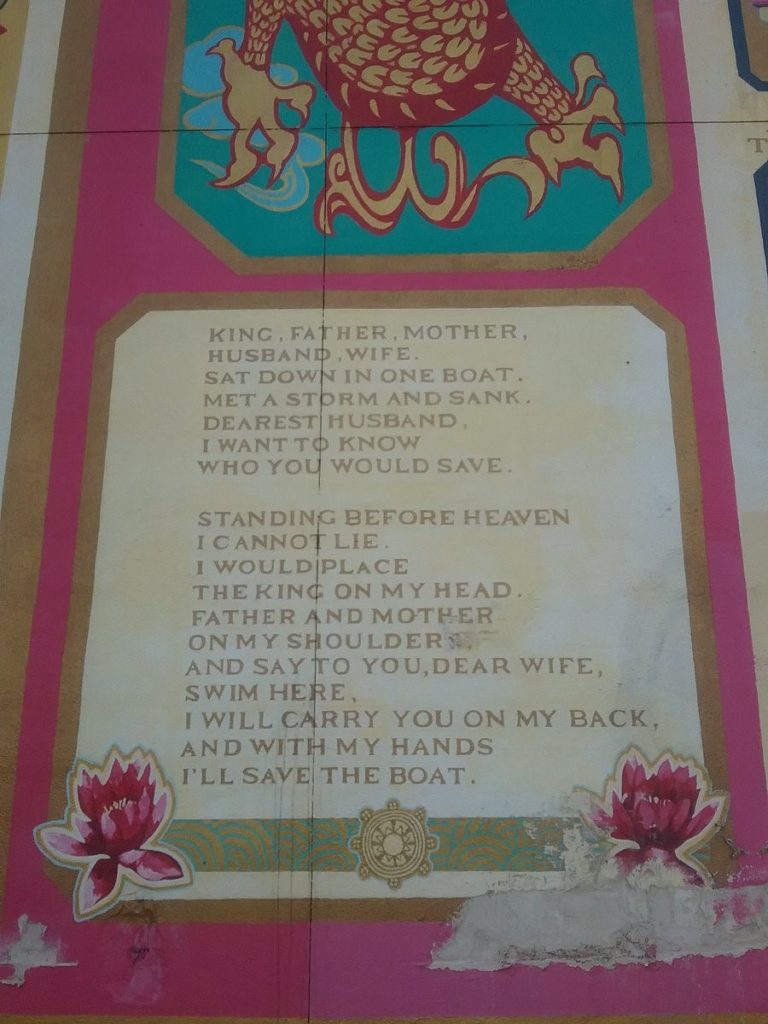
Additional Vietnamese Centers in Southeast PA
Below is a list of places I personally know around the Philadelphia area:
- Ben City Supermarket, Lawncrest, Philadelphia, PA: located in a plaza in Northeast Philadelphia with other restaurants and little shops; my mom goes there some times for specific foods she needs to make dinner.
- Chùa Giác Lâm, Lansdowne, PA (Delaware County, PA): a Buddhist temple where I go every year with my family to celebrate Lunar New Years.
- St. Maria Goretti Parish, Hatfield, PA (Montgomery County, PA): a Catholic church where there’s a separate branch for the Vietnamese community; I took Vietnamese classes at a separate building associated with the church.
Vietnamese History in Pennsylvania
My parents’ journeys to America inspired me to look deeper into the Vietnamese history around Pennsylvania, and I was given the opportunity to do that in my 2019 Keystone Summer internship with PA SHPO staff at Hope Lodge in Montgomery County.
The project lasted for 2 weeks, and the goal of the project is to understand the timeline of the Vietnamese immigration, and finding any place in Pennsylvania that associates with the Vietnamese community.
Census Data
I looked into the 1980 census data through the 2010 census data to see when and where Vietnamese people were coming and settling in Pennsylvania.
The 1980 census data surprised me the most because it showed 14 people from Vietnam who immigrated to Pennsylvania prior to 1950.
What didn’t surprise me was there were at least 7,000 Vietnamese immigrants in Pennsylvania from 1975-1980, and the 14 people were from Philadelphia. Again, no surprise.
The 14 people who came to Pennsylvania have to exist somewhere, so I looked into Ancestry.com to find them. Unfortunately, not a lot of Vietnamese people were found in the search, but only one appeared.
Van Tien Nguyen
His name was “Van Tien Nguyen”: He was born in 1911 in Haiphong, Indochina (notice that Vietnam was still under French control during the time) and arrived in Philadelphia in 1947 by a ship named “Toulon”. He didn’t live in the city, unfortunately. His last residence was in Biloxi, Mississippi.
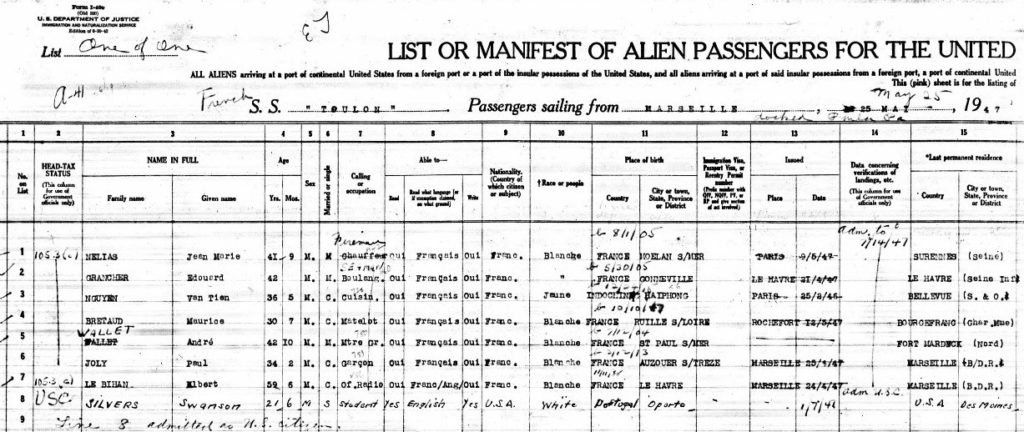
At least 30 Vietnamese people were found on Ancestry.com, and they came to Pennsylvania between 1975-1990.
Philadelphia’s Community
My findings were fascinating and putting in my personal knowledge brightens up the project more. The one thing that stood out the most in this project is trying to find the 14 people living in Philadelphia before 1950.
It surprised me there were actually Vietnamese people living in Pennsylvania, particularly in Philadelphia. According to An Tuan Nguyen’s “More Than Just Refugees—A Historical Overview of Vietnamese Professional Immigration to the United States,” under French colonial policies, few Vietnamese students and scholars were recorded in the United States before 1950.
In this case, one possibility the 14 people were excelled students studying in Pennsylvania. Another possibility, according to my parents, they might be rich Vietnamese-French families who had the opportunity to live in Philadelphia. Again, this was the time the French were still in control of Vietnam, also known as at the time Indochina. It’s best to understand the history of French colonialism in Vietnam before 1954.
Thank you!
I hope I bring acknowledgement for anyone interested in researching about the Vietnamese history in Pennsylvania.
I enjoyed digging into this kind of research, and it kept reminding me of where I came from, my culture, and my heritage of being a Vietnamese American. I would like to thank Shelby Splain for giving me that opportunity to expand my knowledge on the Vietnamese population in Pennsylvania. There’s so much more to know about this topic, and there’s always something new to discover.
Today’s guest contributor is Yen Ho. Yen was one of PA SHPO’s 2019 Keystone interns. She has a Bachelor’s degree in Architectural Preservation from Temple University and is currently interning at University of Pennsylvania’s Biomedical Library while working toward her Masters degree in Library and Information Science.
Comment Policy
PHMC welcomes and encourages topic-related comments on this blog. PHMC reserves the right to remove comments that in PHMC’s discretion do not follow participation guidelines.
Commenters and Comments shall be related to the blog post topic and respectful of others who use this site.
Commenters and Comments shall not: use language that is offensive, inflammatory or provocative (this includes, but is not limited to, using profanity, obscene, or vulgar comments); disparage other commenters or people; condone illegal activity; identify the location of known or suspected archeological sites; post personal information in comments such as addresses, phone numbers, e-mail addresses or other contact details, which may relate to you or other individuals; impersonate or falsely claim to represent a person or an organization; make any commercial endorsement or promotion of any product, service or publication.
If you would like to comment on other topics not related to this blog post but related to PHMC, please fill out the PHMC Contact Us Form.
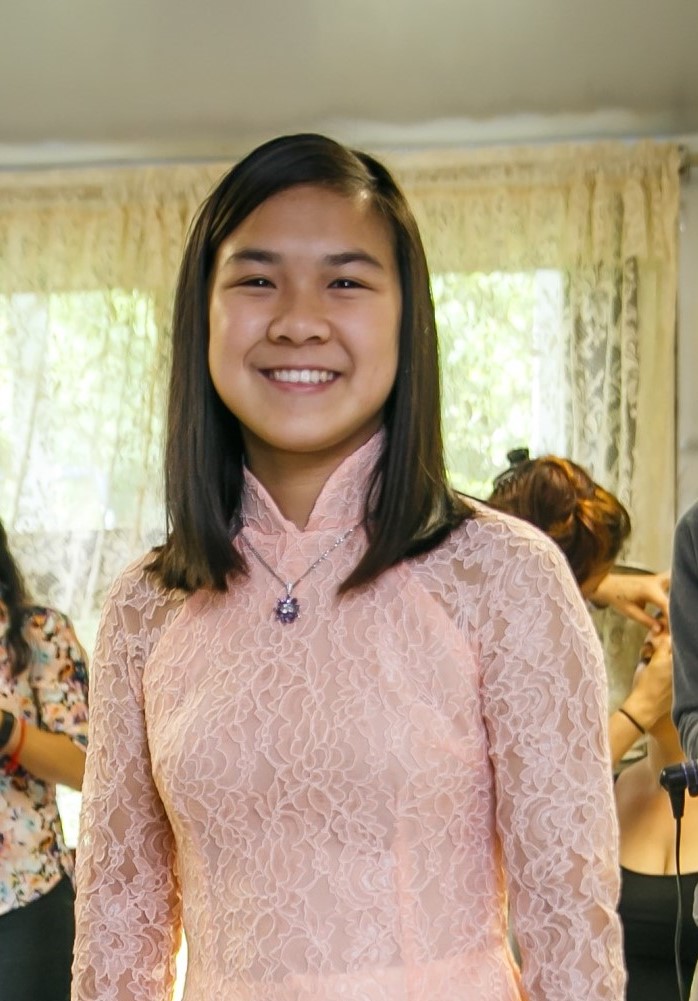
First, I want to say thank you to Shelby for sharing my research to PA SHPO. Second, I want to add this:
I stumbled upon a place in Dauphin County, PA that contributed to helping the Vietnamese refugees after the Vietnam War: Fort Indiantown Gap. For Indiantown Gap was a Pennsylvania Army and National Guard training center until it was turned into a resettlement camp for refugees from Vietnam as well as Cambodia. President Gerald Ford, who established federally funded programs to help refugees settle in the United States, supported the resettlement camps in the US. There were more than 32,000 Vietnamese and Cambodian refugees were taken into the camp.
In the camp, refugees attended English classes, participated in sports, and search for employment in PA. “Indiantown Gap quickly gained a reputation as a ‘fast’ processing center, and by the early 1980s, around 12,000 refugees had found work and sponsors in Philadelphia, Pittsburgh, and Harrisburg, making Pennsylvania the state with the third-largest population of refugees (after California and Texas) at the time.”
What an interesting article! Thanks for sharing your insight and research, Yen. I am glad you are following up on the story of Vietnamese refugees at Fort Indiantown Gap. Sometimes these somewhat recent history stories do not get the attention they deserve. I am sure there are many people who could offer details about that time and experience via interviews. Maybe you will have much more to share on this topic in your next blog article!
Thank you so much for sharing this! With all of the issues surrounding the Asian community lately, I decided to read Minor Feelings by Cathy Park Hong and eventually began digging into how many parents came to America and stumbled upon this post. I’ve seen this mural multiple times in Philly but never walked up to really take a look at it. It’s comforting to have stumbled upon your post .
Here is a story from the Fort Indiantown Gap Vietnamese Buddhist community that I was honored to be a part of. Many thanks for your work in keeping their history alive.
Rev. Virginia Parkum
https://vietnam.witf.org/mr-hanh/